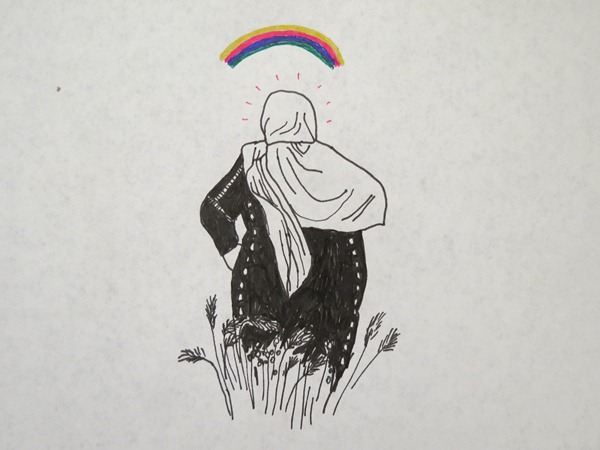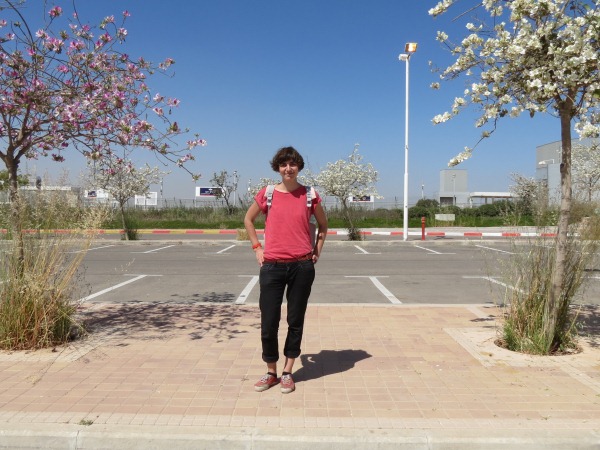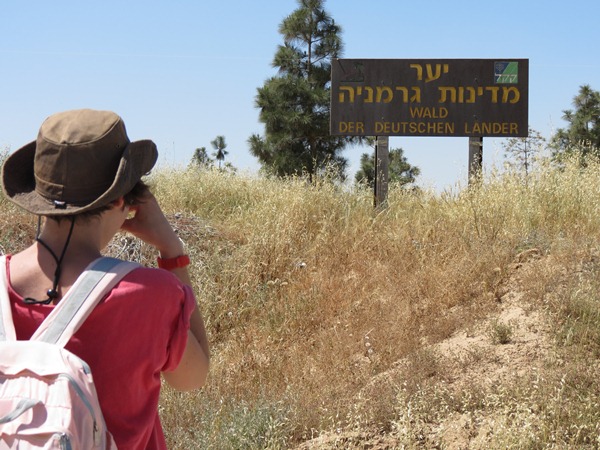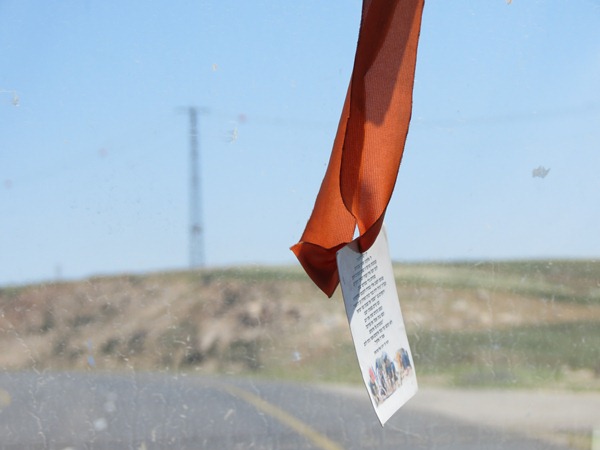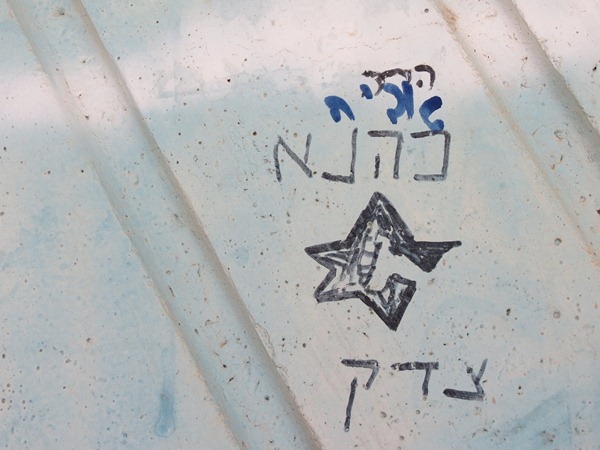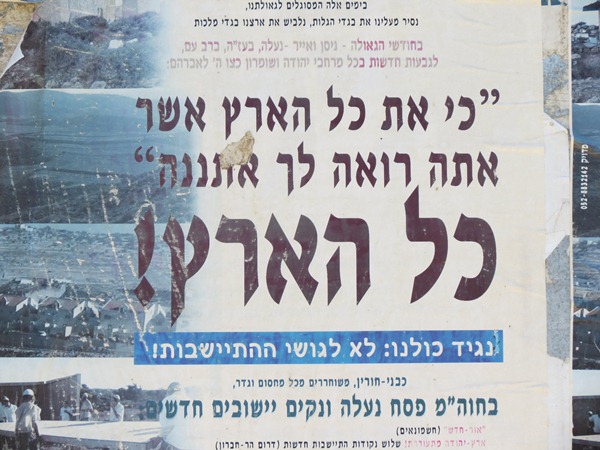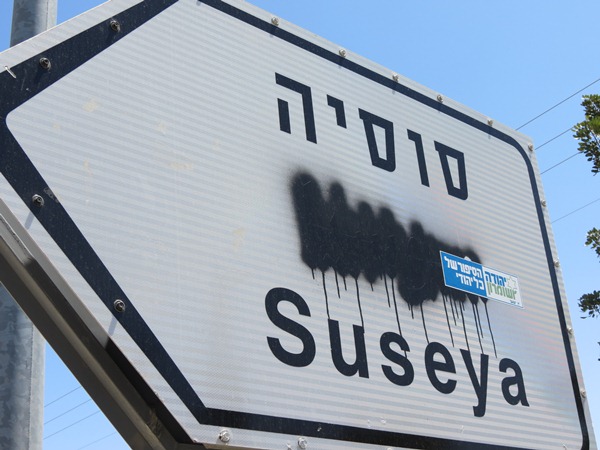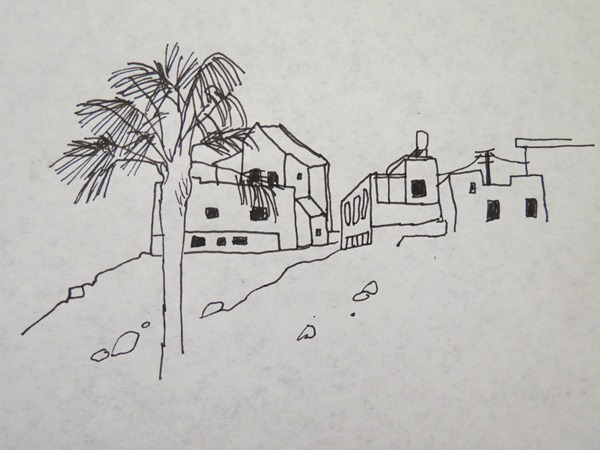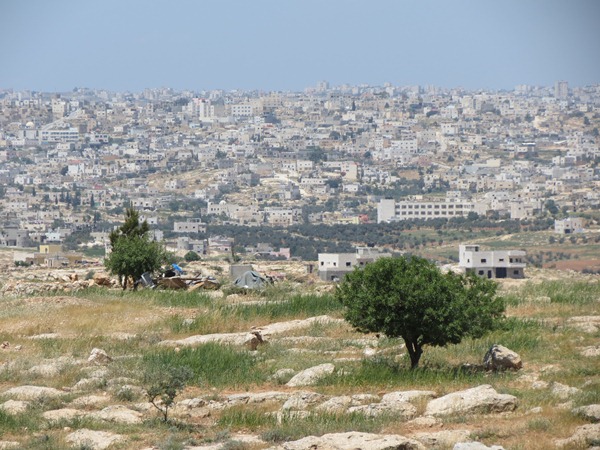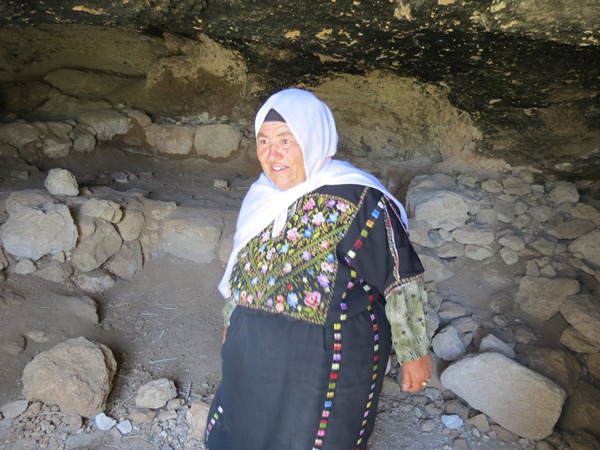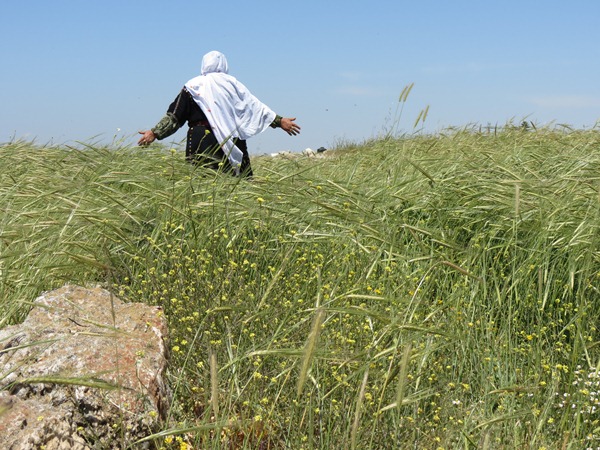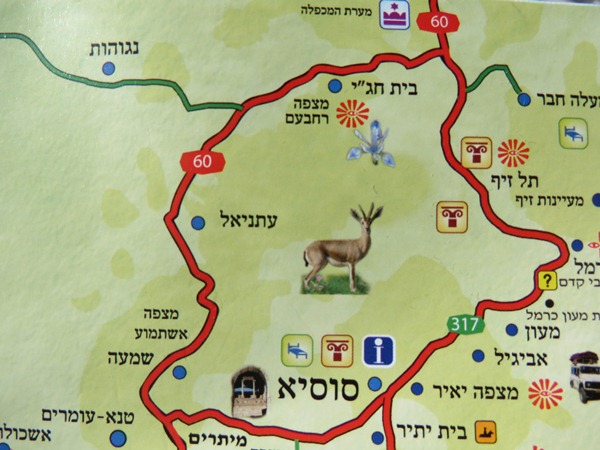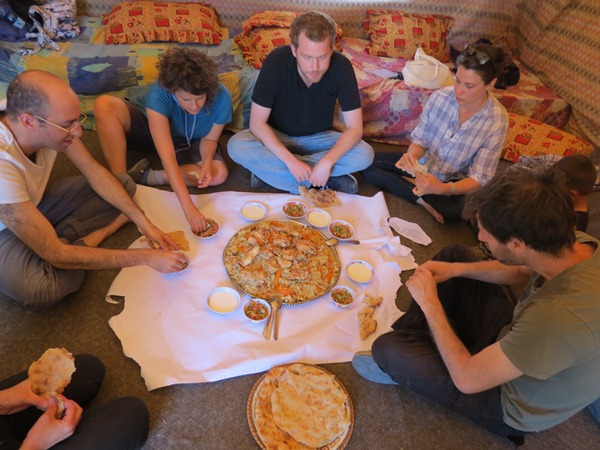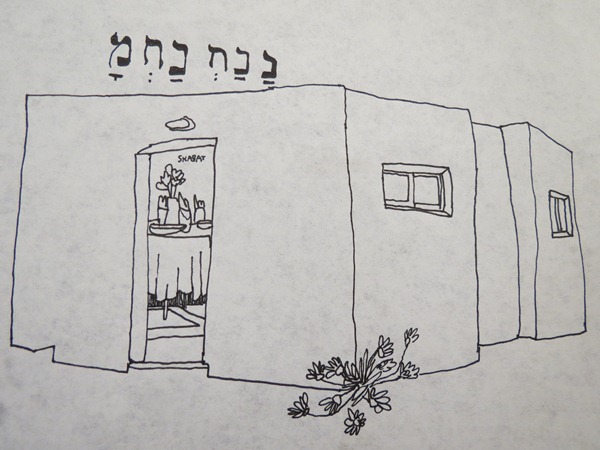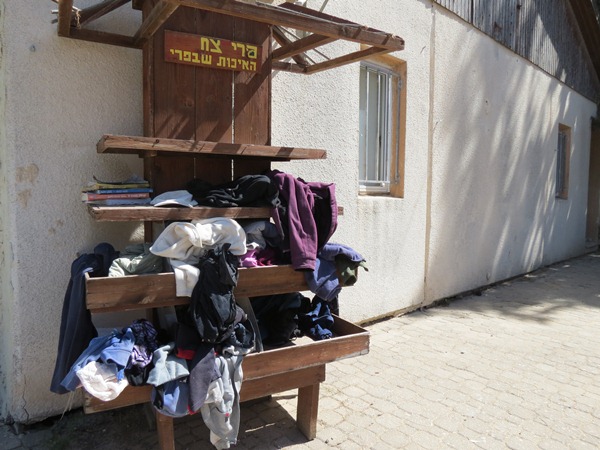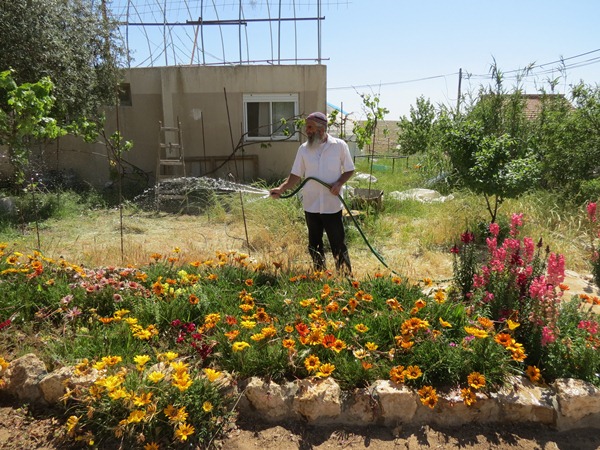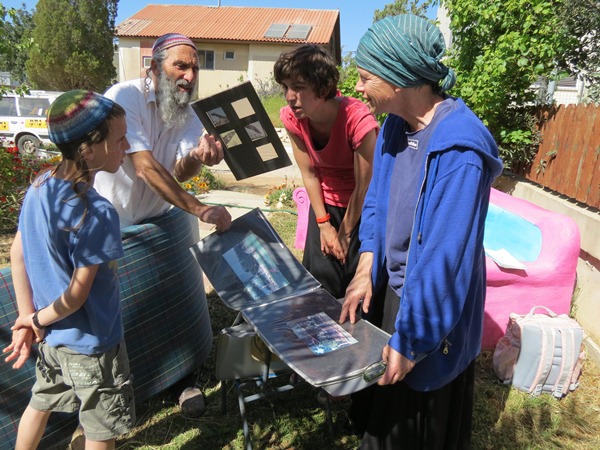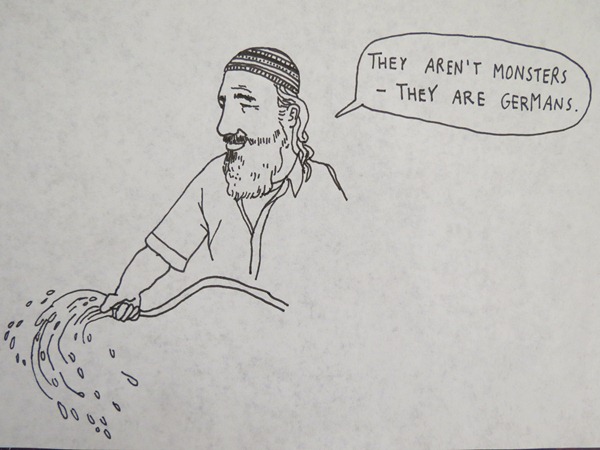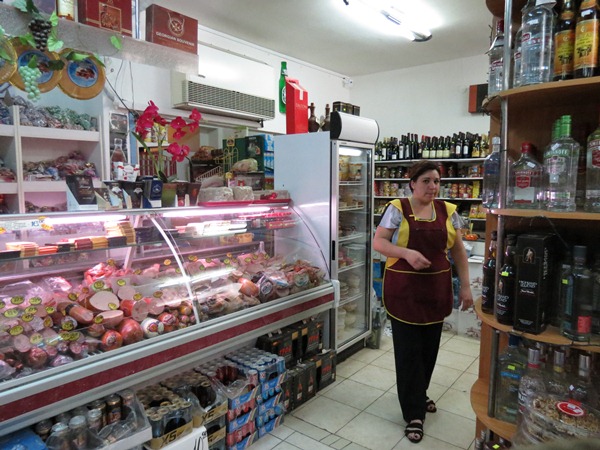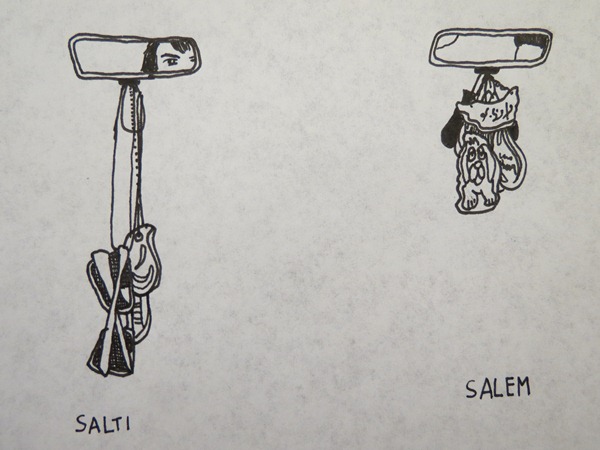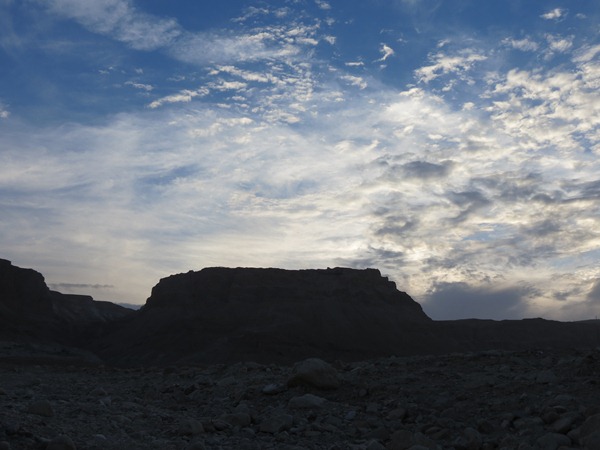From Lehavim to Masada via South Hebron Hills tent dwellers, God-fearing settlers and a Russian minimarket.
Someone very special is waiting for me this morning outside the train station of Lehavim, north of Be’er Sheva. It is Tine Fetz, the German artist who got into the legal trouble with me on the September Journey, and then illustrated those events that we were not able to photograph.
Tine is back in the country and ready to get in trouble again. She picked quite a day to join me: this is to be the final one along the Green Line, and having spent yesterday on the Israeli side, I now prepare to cross the fence and explore the South Hebron Hills. Those in activist circles know the weight of this geographical designation. I do not. I have never been on a tour here with Breaking the Silence, despite its reputation as being their most disturbing tour, or because of it.
My ignorance will likely benefit us both. It is so much easier to walk through this country unaware of its cruelty, that this is naturally what most people choose to do.
Getting out of Lehavim is tough. We are trying to catch a lift towards the fence, in the midst of the northern Negev’s hot, shade-less plane. We decide to advance on foot to the next intersection. On the way, Tine tells me of the first incident in which she was made to feel uncomfortable as a German. A stranger who spoke to her in Jerusalem the other day simply turned his back on her and walked away when she mentioned her origin. Just as she is telling me this, we pass a sign that reads: “Forest of the German States.” It surprises us so much that we fail to note the absence of an actual forest anywhere near it. Tine immortalizes.
Another surprise arrives by text message. It was sent by my friend and fellow theater critic Sivan. “Is that you walking outside Lehavim?” he asks. It turns out that Sivan just passed us in a car, but it was too full to pick us up: full of activists, in fact, headed for some kind of trouble in the region of Susya.
Tine and I are doing our best to clarify that we are no activists. We are interested in meeting settlers. Real, hardcore, bearded, ideological settlers, not white-bread ones like Ezra. Tine even brought, at my advice, a long black skirt that makes her look like a right “hilltop girl.” Following our lift to the checkpoint, she puts it on.
The car that picks us up has a ribbon hanging from its rearview mirror, holding a copy of the popular “prayer for the traveler.” The ribbon is orange, the color of the struggle against Sharon’s 2005 disengagement plan, which has symbolized support for the settlements ever since. Neither the driver nor his friend is bearded or even sports a kippa, and neither appears very hardcore, but to the best of my knowledge there was nothing orange around Ezra’s house or in his parents’ car. We are now in new waters.
As we advance down the line, other political symbols emerge. The bus stops tell us that Kahane (reactionary and racist former MK Rabbi Meir Kahane) was right.
Posters remind that God promised us this “ENTIRE COUNTRY!”
And signs that point to places, such as this one outside the settlement of Susya, have gone from trilingual to bilingual by popular demand.
Susya (or Suseya, I guess, though Google disagrees) was the destination of Sivan’s party. We give him a call and he tells us that he’s in some archeological site and will soon come and pick us up. Meanwhile Tine creates her first drawing of the day, a Susya skyline.
Sivan arrives with Yoav, of the human rights organization “B’Tselem.” They turn onto a narrow road that bypasses the settlement and continues north, and soon we learn to our amazement that the quiet hills were misleading. The big city of Yatta is in fact walking distance away, but its suburbs fail to reach Susya. Yatta is located in Area A, which makes up some 17 percent of the West Bank. Susya is in Area C, which makes up over 72 percent of the territory, and where Palestinian construction is prohibited by Israel.
Prohibiting construction is one problem, but there is another. As Yoav and Sivan explain, we have entered the land of the uprooted.
The South Hebron Hills are, to this day, home to cave dwellers. These are not Bedouins, but Palestinian peasants who left their villages in the 19th century to dwell within the land itself. Since the 80s, when the settlements first appeared in this region, the luck of the cave dwellers ran out. Settlers have been known to brutalize their property, and the army sealed several caves with concrete. Every effort was made to “sterilize” the land south of Yatta.
Families living in Susya have been particularly unlucky, since the site of their village has been identified as that of an ancient Jewish city and a spectacualr synagogue was excavated within the ruin that served as its mosque. All families were evicted and the site became a tourist attraction.
A similar thing happened in Petra, where people have dwelled in the caves since – well, since Petra was built. The Jordanian government, however, resettled the Bedouins in a town built especially for that purpose. It is not a well-designed town, and the sorrow is still great, but at least it is a town. Here in Susya, the only town built was the settlement. All the the cave dwellers received was a kick in the butt. They became tent dwellers, and their three-decade-old encampment is situated directly across from the archaeological site.
As soon as we arrive, Yoav comes up with an idea. “We just took two of our hosts down to the site, bought them tickets and chaperoned them in,” he says, “but we didn’t take the mother along, because there was no room in the car. Why don’t you guys go with her? Take the car. You can probably deal with the attendant. Just don’t let him catch sight of her before you have the tickets in your hands.”
I’ve only known Yoav for five minutes and am a bit dumbfounded. “Why won’t you come with us?” I ask.
“The attendant’s already seen me, I’m burned. Go on, the place closes at 2:00. So there’s little time, and this is important, guys. She hasn’t been there in 30 years.”
Thirty years? How is that possible? The place isn’t even fenced! I’m fairly sure Yoav is exaggerating, but adventure calls and the sweet woman who takes the back seat is warm and talkative. Her name is Umm Jihad, and she waits patiently in the car while I go pay for tickets. The ticket booth turns out to be closed, so we decide to simply walk in.
Just as the excavated walls begin to rise around us, the attendant (bearded, hardcore) appears and asks us what our business is around here. I respond as would any normal Israeli tourist who accompanies a matron in a traditional, embroidered Palestinian dress and a white Hijab to an ancient Jewish city in the South Hebron Hills. “The ticket counter was closed,” I say.
He ponders this shortly, than says: “Just pay me when you get out.”
As we enter Umm Jihad’s hometown, it quickly becomes apparent that she has not been here in a very long time, and I mean very long. She points out the houses of uncles and cousins, steps into the caves and becomes more and more radiant each time she reemerges.
She stops by the synagogue and tells how Prime Minister Begin arranged for Jews and Muslims to pray there together. What sounds like a peaceful idyll was in fact the beginning of the end for her and her family.
“Where was your house?” I ask her.
“We’re getting there,” she says.
Then we come very near it and suddenly 30 years of her age disappear, and she begins to run through the wild barley. I have never seen a woman her age run like this, and I’m terrified she will fall. She does not fall. She stops and spreads her arms in complete bliss. She has arrived at her old doorstep.
The cave which opens at her feet is empty like the others, and its mouth is overgrown and impassible, but Umm Jihad doesn’t seem bothered. “This is such a happy day for me,” she repeats over and over, “this is a holiday, a holiday.” Then she is ready to go back, and back we go with her, in complete disbelief.
Before returning to the tents, however, I have to stay true to my word and make a stop at the ticket counter, where the attendant, David, hands me a brochure of the site, complete with a map in which Yatta does not appear (a cute, horned Ibex is where it should be).
David cautiously questions me while counting the change. He is not surprised to hear that I am Tel-Avivian, but does seem baffled by my friendly and cheerful demeanor. That should be no mystery. After walking alongside Umm Jihad in her moments of sweet nostalgia, I would have been friendly towards Pol Pot.
“What do you do back in Tel Aviv?” David asks.
“I’m a theater critic.”
He smiles. “This whole world is a theater, and the director is up in the heavens.”
“So they say.”
Back at Umm Jihad’s tent, we are treated to a delicious meal of chicken maklouba, yogurt and freshly baked pita bread. The family eats separately, which leaves us a homogeneous bunch, the lunch crowd of a Tel Avivian cafe that got lost in the hills. Here, from right to left are Yoav, multi-disciplinary activist, filmmaker Dani (who teamed up with Yoav to make a short documentary about Susya, which will be screened at Tel Aviv’s cinematheque this Thursday), human rights lawyer Carmel, and Sivan himself.
These people are fighters and lovers. They are among the best I know, but we did not come all this way to see them. The sabbath is at hand and soon the settlers will be indoors, blessing the candles. Sivan drives us to the road, and we head into Jewish Susya.
The first thing I notice here is an exchange rack, where people bring their old clothes and books for others to pick at for free.
The second thing I notice is a man watering a lovely flowerbed.
Tine and I ask him if he will fill up our bottles with his hose, since the day is hot and we are on a journey.
“We’re all on a journey,” says the talented gardener.
I’m thinking back to David’s theater comment. “How come everyone is so philosophical around here?” I ask.
“This is not philosophy, my friend. It’s the Torah.”
“And is the Torah not philosophy? You know that philosophy means ‘love of wisdom.’ What is the Torah if not love of wisdom?”
“The Torah is not love of wisdom,” he decrees. “The Torah is the word of God, and the word of God stands even if it defies wisdom. If God should say: left is right and right is left, you must accept that.”
His name is Abraham, and not only does he pour us water and invite us to rest on a pink sofa in his yard, he even goes into the house and brings us a taste of what his wife, Sarah, cooked for the sabbath: ktzitzot (fried meat patties) and rice. We’re still stuffed from all the meat and rice at the tent, but Sarah’s food is great and nothing is left on the plates.
There’s a certain magic to being hosted by Abraham and Sarah, just as the angels were in the book of Genesis. We moved from a literal tent to an allegorical one, in which Sarah remains unseen at first, just like her Biblical namesake. She’s busy cleaning for the Sabbath, and I am thinking of a word of good news to give her. Would she be happy that her neighbor had just had an uplifting experience among the ruins? As Jews, the concepts of uprooting and return run in our blood. Perhaps she would.
Eventually Sarah emerges and the two tell us the family’s story. It began in Tel Aviv, where they both were, as Abraham puts it, “secular and leftist.” They first moved to a kibbutz in the region, though south of the line. Then Sarah began working in Susya, and the couple fell in love with the people living there. “At first I also thought – urgh! the settlers!” says Abraham, “I thought that all they do is steal money from the State, that they should return to ‘Israel.’ Then I came to think: Here is one place where no one wants to steal from you, or to cheat you. and I said to myself: I want to be like these people.”
“Does the status of the land bother you at all?” I ask.
“Look,” he says, “This place is just like Tel Aviv or Ramle. The same things that happen here happened there, only at a different time in history. In any case, we must stay focused on the fact God promised this country to us, or else we will be eternally confused.”
Sara now brings out an album and we look at some of Abraham’s older artwork.
Much of it deals with the Holocaust, including an enormous installation once erected at the Herzliya museum, in which the statue of a man seems to escape those of winged beasts. Sarah points out the monsters, but Abraham corrects her: “These aren’t monsters, these are Germans.”
Tine laughs.
It’s time to exchange warm goodbyes and leave. As we cross the fence at Yatir, I bid it farewell for this journey. I will continue to read about it in Haggai Matar’s priceless series, published alongside my own.
No time for reading now, though. The road descends into the proper desert, and into a true wilderness where we must find a place to pass the night. We stop at the town of Arad, and buy groceries at a Russian mini-market (I love those).
Then we keep descending, to below sea level. We get a lift from Salem, a Bedouin who speaks fluent German, and from Salti, a Palestinian-Israeli, who tells us his tale of a painful divorce and years in prison.
As the sun sets, Salti pulls over, allowing me to take a photo of Masada. This is an archeological site, like old Susya, and a hilltop fortress, like new Susya, a place once conquered and emptied, like old Susya (I highly doubt the suicide story, due to flaws in the historiography), and where the faithful used to see before them only the word of God as they percieved it, like the faithful of new Susya. Our strange mountains provide no view to the distance. What choice have we but to give up on them and hope that the lowest point on earth somehow will.
_______________________________________
The Round Trip thus far!
View Larger Map
Thanks for reading and taking part in the adventure. All writing on this site is done voluntarily, so if any of you would like to pitch in directly for my travel expenses, please click here or on the “donate” button at the top of this page to do so. Donors who contribute more than $25 will receive free the first part of the three-part ebook (compatible with iPad) that will be released this summer. I’m deeply grateful to those who already donated. Thank you so much! This project would be impossible if not for you.
Relive the first two journeys:
The September Journey
The Christmas Journey


